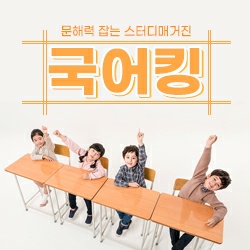Using Social Media to Inspire Concise Writing
《 트위터과 페이스북 같은 온라인미디어가 바로바로 소식을 전하는 세상이에요.
짤막한 메시지가 위력을 떨치고 있는 거죠. 어떻게 하면 단편소설이나 논픽션을 읽고 나름대로 의견을 내놓고 또 그런 글을 직접 쓸 수 있을까요. 앤디 셀즈버그 교수가 간결한 문장의 중요성을 강조한 글부터 읽어볼까요. 》
I've been teaching college freshmen to write the five-paragraph essay and its bully of a cousin, the research paper, for years.
But these forms invite font-size manipulation, plagiarism and cliches. We need to set our sights not lower, but shorter. I don’t expect all my raduates to go on to Twitter-based careers, but learning how to write concisely, to express one key detail succinctly and eloquently, is an ncredibly useful skill, and more in tune with most students’ daily chatter, as well as the world’s conversation. The photo caption has never been more vital. And in “How Do I Love Thee? Count 140 Characters” by Randy Kennedy, the focus is on the literary potential of the Twitter post: But there’s evidence that the literary flowering of Twitter may actually be taking place. The Twitter haiku movement ― “twaiku” to its initiates ― is well under way. Science fiction and mystery enthusiasts especially have gravitated to its communal immediacy. And even litterateurs, with a capital L, seem to be warming to it.
 |
< 정리 & 구성 이수경 기자 ysk@donga.com >
어린이동아 취재팀 kids@donga.com
위 기사의 법적인 책임과 권한은 어린이동아에 있습니다.
< 저작권자 ⓒ 어린이동아, 무단 전재 및 재배포 금지 >

 프린트
프린트


 공유하기
공유하기

 페이스북
페이스북 트위터
트위터 카카오스토리
카카오스토리 네이버밴드
네이버밴드









※ 상업적인 댓글 및 도배성 댓글, 욕설이나 비방하는 댓글을 올릴 경우 임의 삭제 조치됩니다.
더보기